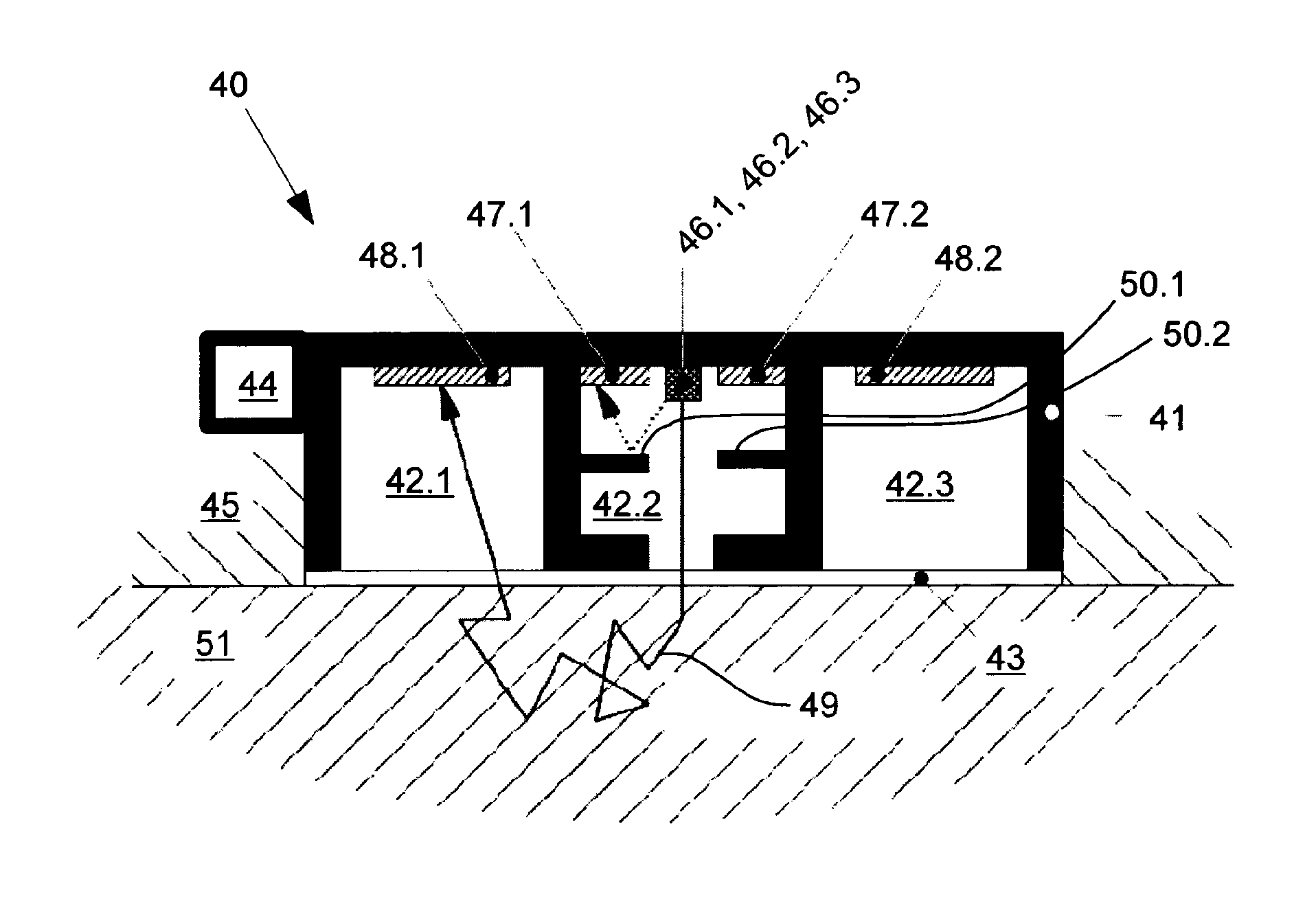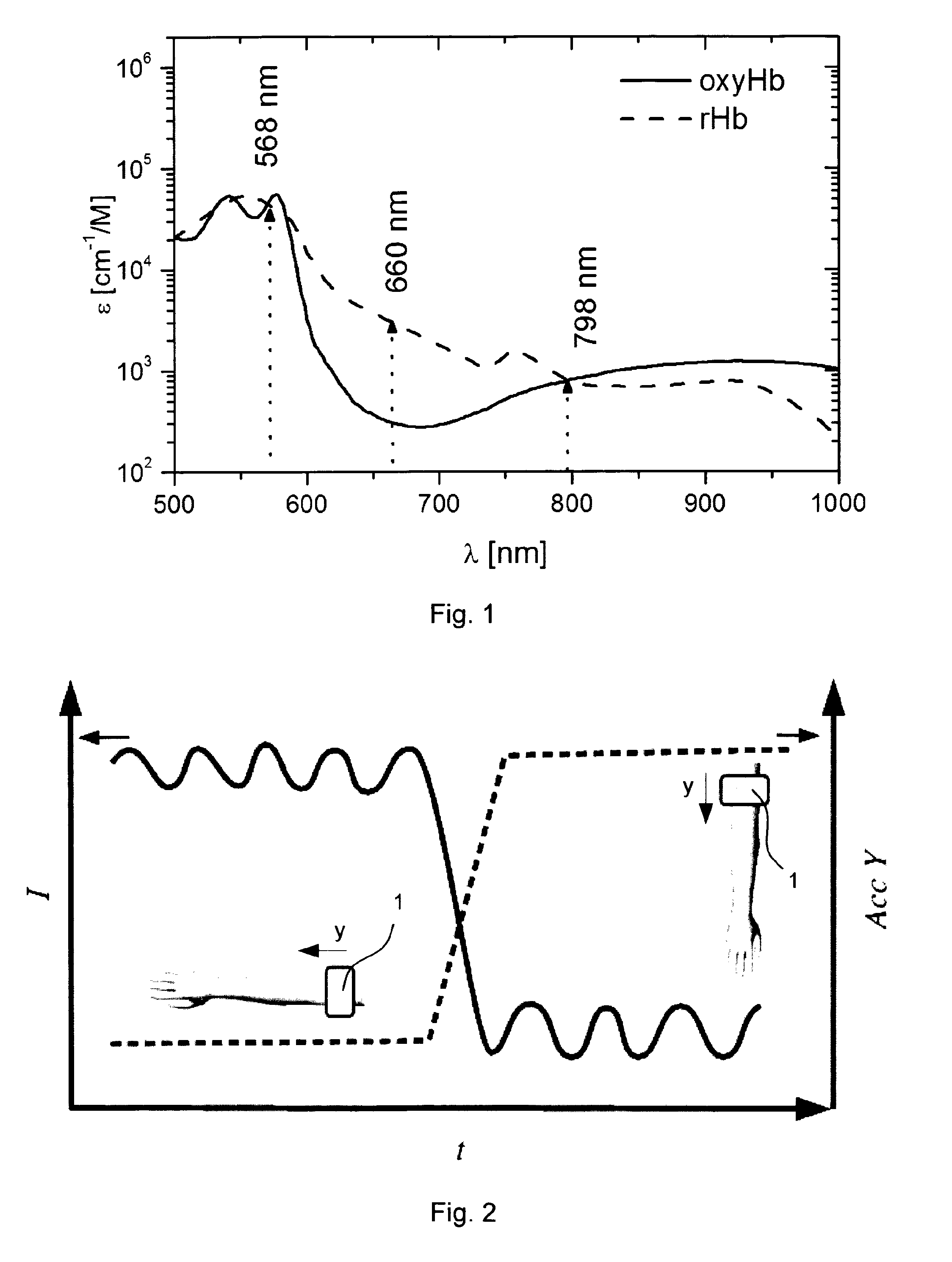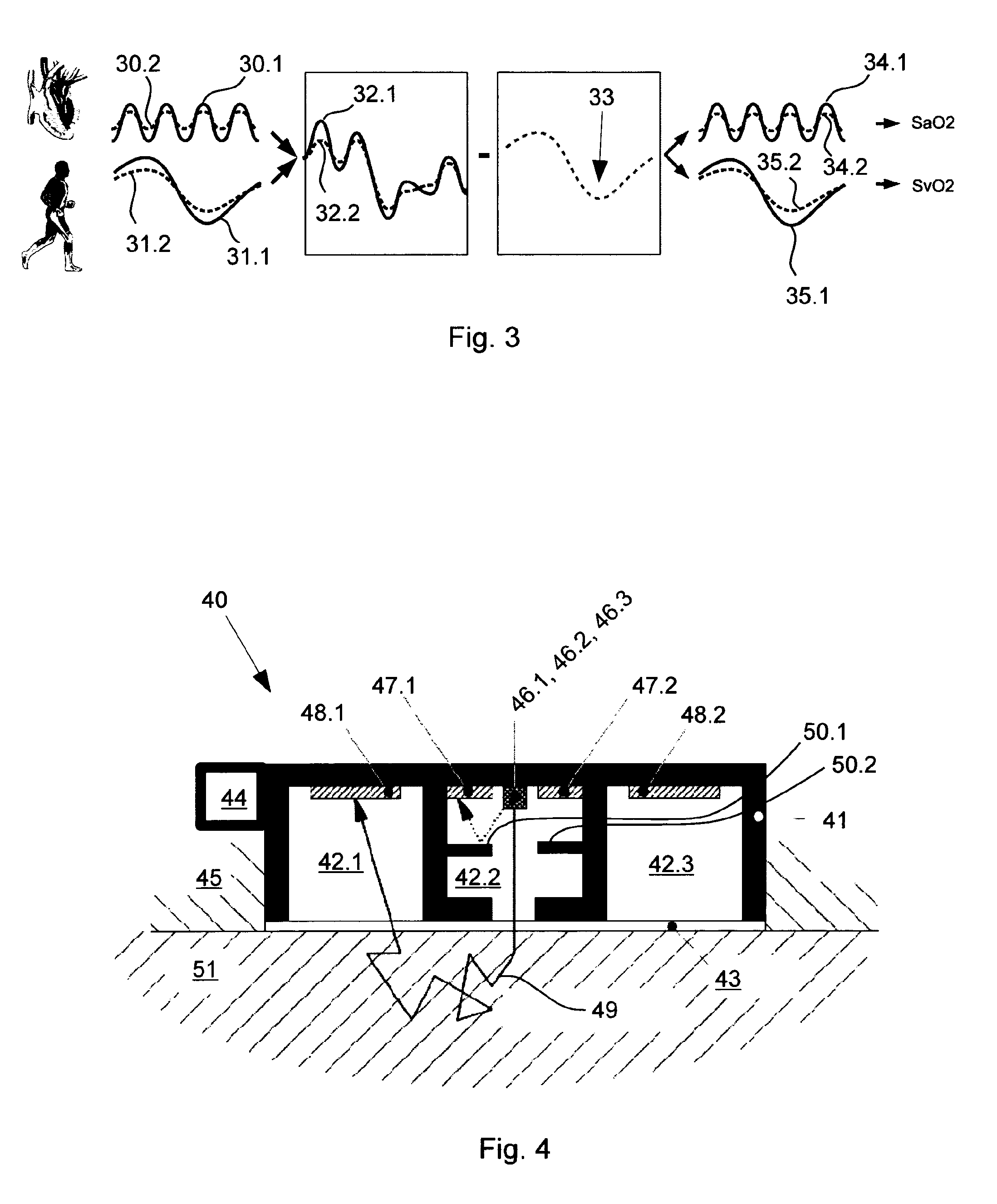System for noninvasive optical measurements of physiological properties in tissue
- Summary
- Abstract
- Description
- Claims
- Application Information
AI Technical Summary
Benefits of technology
Problems solved by technology
Method used
Image
Examples
Embodiment Construction
[0085]FIG. 1 schematically shows a graph with the absorbance of oxygenated hemoglobin (oxyHb) and reduced hemoglobin (rHb) in dependence of the wavelength of light. The vertical axis s of the graph represents the absorbance i.e. a molar extinction coefficient [cm−1 / M] which measures how strongly chemical species (in this case oxyHb and rHb) absorb light. The horizontal axis λ of the graph represents the wavelength [nm] of the light. Vertical dotted lines represent wavelengths chosen for one embodiment as described above. Two of these wavelengths are isosbestic points: a green isosbestic point at 568 nm and an infrared isosbestic point at 798 nm. Isosbestic points correspond to a wavelength where oxyHb and rHb exhibit the same absorbance. A red wavelength at 660 nm represents a point with a large difference i.e. a large contrast in the absorbance of oxyHb and rHb.
[0086]A difference in the absorbance of oxygenated and reduced hemoglobin as for example in the red range at 660 nm can be...
PUM
 Login to View More
Login to View More Abstract
Description
Claims
Application Information
 Login to View More
Login to View More - Generate Ideas
- Intellectual Property
- Life Sciences
- Materials
- Tech Scout
- Unparalleled Data Quality
- Higher Quality Content
- 60% Fewer Hallucinations
Browse by: Latest US Patents, China's latest patents, Technical Efficacy Thesaurus, Application Domain, Technology Topic, Popular Technical Reports.
© 2025 PatSnap. All rights reserved.Legal|Privacy policy|Modern Slavery Act Transparency Statement|Sitemap|About US| Contact US: help@patsnap.com



